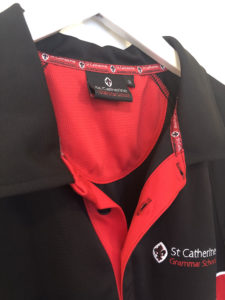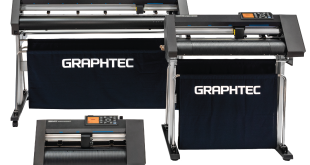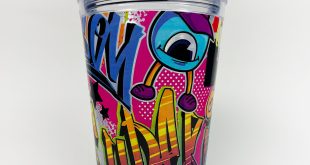 Clothing created specifically for the purpose of sublimating is on the increase. Here P&P editor Melanie Attlesey runs through why you should consider this opportunity and what options are available out there.
Clothing created specifically for the purpose of sublimating is on the increase. Here P&P editor Melanie Attlesey runs through why you should consider this opportunity and what options are available out there.
As I am sure many of our readers already know and understand, dye sublimation is the process of using heat to transfer digital images onto polyester.
The process enables a completely bespoke and unique option and is particularly beneficial in the world of sport. Dye sublimation enables truly outstanding and creative designs to be achieved, such as incorporating badge and logo watermarks, graduated fade and shadowing techniques. Best of all these near photographic designs will not crack, peel, twist or fade.
Truly customised
One of the leaders in the field for producing bespoke dye sublimated garments is GFORCE Sportswear and its sister brand Grahame Gardner.
GFORCE Sportswear produces fully sublimated uniforms for a wide variety of sports including rugby, football, hockey and netball. The process enables any kind of print to be created, whether that’s solid colours, graduated colours, bespoke colours or individual names. The brand recently added GFORCE Signature to its collection – a range that offers a choice of fully customised, self-branded school teamwear garments through dye sublimation. Schools can now add their own name or brand throughout the items including on the inner neck tape and neck labels, side seam labels and swing tags.
Grahame Gardner’s Advance range was one of the first in the UK to combine state-of-the-art fabrics with the latest dye sublimation printing techniques to create fully bespoke workwear uniforms. The collection was given a fresh lease of life in the spring of 2019 after a period of research and development. The main improvement was the quality of the final produced dye sublimated garments.
Also on the sportswear front, SPIRO has worked hard to develop garments for the ever-burgeoning dye sublimation market. SPIRO’s contemporary performance fabrics are an excellent match for sublimation. The brand’s Bikewear Tops have led the way in the cycling market, which has always been a key advocate of sublimation printing, allowing teams to include large print areas for sponsor livery.
When it comes to dye sublimation printing an important point to remember is that the dyes are transparent, which means that it performs at its best when applied to white and lighter colours. Bearing this in mind SPIRO developed the Performance Tee and Performance Polo in a huge array of colours, including white and bright shades, to give the printer versatility and confidence in all print applications.
Sublimated jackets
Jackets are often a garment that printers avoid sublimating because of the expense of the garments and the process itself, so suppliers are increasingly trying to develop outerwear that is sublimation friendly.
Result Clothing says that workwear is a huge growth for sublimation printing, with many garment decorators choosing sublimation as their first choice onto hi-vis and safetywear. Being a dye system, sublimation allows for increased durability and wash resistance which is key to any workwear garment. Result’s Safe-Guard range brings this versatility to the printer with the new Printable Hi-Vis Softshell and a wide range of certified garments designed specifically for the industry.
Its not only the clothing suppliers that are keen to enhance this market, but the garment decorators too. Screenworks, one of the UK’s longest established garment decorators, has launched a fully sublimated softshell jacket after a long period of research and development.
The new jacket is gender neutral and is made from high-quality fabric that delivers a four-way stretch. Using sublimation, corporate designs, artwork and striking photographic images can be printed directly across the fabric. Following printing, the jacket is constructed and stitched together to create the final product. A gilet version is also in the pipeline.
And finally, if it’s just the fabric you’re after, then there are suppliers out there that can offer you a wide range ideal for sublimation printing, Chadwick Textiles being one. Chadwick’s proven sublimation range has been developed alongside and in conjunction with many respected brands within the fields they specialise, meeting durability, performance and technical requirements. Stock fabrics include flat and surface interest jacquard fabrics in 100% polyester and poly spandex, also technical two and three layer fabrics for printing.
Dye sublimation certainly has its advantages, especially if your customer is after a truly bespoke design. Why not take a look at the equipment featured on the next couple of pages to see what this process can offer you.
 Sublimate a Mumbles Zippie
Sublimate a Mumbles Zippie
The team at PenCarrie have provided some helpful tips to help you sublimate a Mumbles Zippie.
What you will need: cap press, Zippie Owl (MM54), sublimation print and protection paper (X2028).
Step 1: Remove the stuff bag from the Zippie Owl.
Step 2: Position the bear so the bottom platen sits underneath the front of the bear.
Step 3: Flatten the pile on the print area in a downwards direct.
Step 4: Place the print over the top and let the edges of the paper hang over.
Step 5: Place protection paper over the top.
Step 6: Press at 180˚ for 60 seconds (light to medium pressure). By following these steps, you’re more likely to get a vibrant print without damaging the pile of the tummy. Sublimation is great for leaving a print that will last even when washed.
 Printwear & Promotion The Total Promotional Package
Printwear & Promotion The Total Promotional Package




